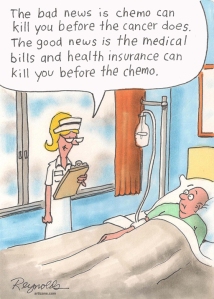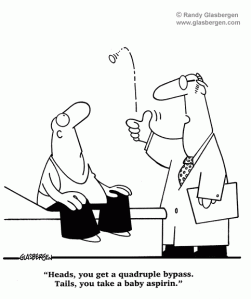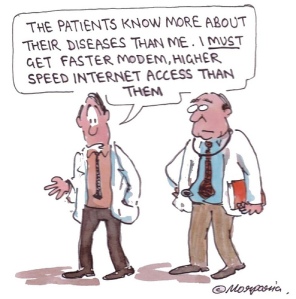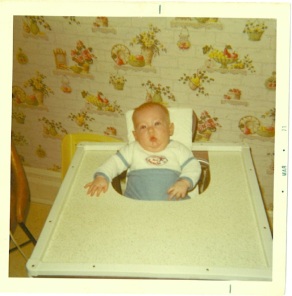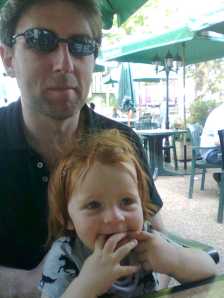Yesterday some deer walked right up the street. Monday, we went sailing on Chesapeake Bay. Last week I saw the White House. I’ve eaten 5 crab cakes in 2 weeks. I’m in Bethesda, Maryland.
As the Talking Heads say: “How did I get here?”
In March, the 2 rounds of Bendamustine didn’t work. And my lower right lung partially collapsed due to my lymphoma growing around the bronchial tubes and squeezing a couple of them closed. When my PET scan on April 17 showed increased disease, I wasn’t surprised. My doctors at City of Hope took it as a signal to get even more aggressive.
My docs decided on a round of IGEV – which I actually had in 2010 in preparation for my auto transplant. I had a pretty good response to it then – so, we were hoping that I’d have a good response to it now. Even though it was going to kick my ass.
And kick my ass it did.
IGEV is given inpatient over 5 days – which turned into 8 days due to some high liver counts. In addition, the chemo itself was pretty tough to take and requires a lot of antibiotics and a close watch on my counts.
Because City of Hope was my planned transplant hospital, I had my IGEV there (instead of UCLA). Without going into detail, my in-patient experience was really difficult and miserable. The doctors did not communicate well, there was confusion with my medications, and the room was a tiny, dark hole tucked in the corner of the old hospital with a bathroom so small I couldn’t fit myself and my IV pole in it.
After 8 days of in-patient and some serious ups-and-downs, Jen and I convinced the weekend doctor that I could take better care of myself at home. And she agreed. You know your treatment is sub-par when the attending doctor agrees that you would get better treatment at home then the hospital. The #1 thing I had to do was rest and recover and that was the absolute last thing that was happening at COH. So, we packed up and went home.
The next 3 weeks are kind of a blur to me. I was laid up pretty bad from the IGEV. I had to give myself IV antibiotics at home. My liver counts went down, my blood counts went up. I was exhausted, couldn’t focus on anything, and basically spent a couple of weeks going from bed to couch and back again. Also, my dry cough returned with a fierce vengeance. Not only is my cough an alarming sign of Hodgkin’s on the rise or other complications, but it drives Jen absolutely insane and I find it very disheartening. Unless I was laying prone, I was coughing constantly – to the point where I would throw up. Basically, I was useless.
Some time during my delirious recovery from the IGEV, Jen kicked into action on researching a clinical trial that she had come across back in February. Put your thinking caps on, it’s time for a little science lesson:
In a traditional allogeneic transplant, the patient is given enough chemotherapy to basically wipe out their bone marrow completely and destroy their immune system (similar to what I went through in my autologous stem cell transplant). Then, the patient is infused with stem cells from a donor. Ideally, the donor is a sibling with a 10/10 human leukocyte antigen (HLA) match. These new stem cells imbue the patient with an all new immune system, which is supposed to fight the lymphoma.
However, along with the (hopefully) cancer fighting properties, the new immune system may also attack the patient’s body resulting in graft vs. host disease (GVHD). A little GVHD in the patient is a good sign. Too much GVHD can be disastrous as the new immune system can really screw up the patient. The better an HLA match, the lower risk of chronic GVHD. But these things can’t be predicted. Although doctors have gotten a lot better at controlling GVHD.
Allo transplant becomes a balancing act between immuno-suppressing the patient so that they don’t get too much GVHD while waiting for the new immune system to take hold and start fighting the cancer. During this time (which could last for many months), the cancer has an opportunity to grow since the patient is basically off of active treatments.
There are a few different variations on the allogeneic protocol and different hospitals take different approaches. Some hospitals give a lot of chemo and really wipe out the patient, which is the traditional allo protocol. Recently, research shows that less chemo is actually better for an allo patient and most hospitals pursue a reduced intensity level of chemo (RIC). A few hospitals promote ‘haplo’ transplants, which is a half-match, usually a parent. There are many arguments for the many different protocols and the truth is that the research is ongoing but information and data about allo transplants have come a long way in the past 10 years.
The question for the patient is: What protocol is the best for them?
When I was told the results of my April 17 PET scan at City of Hope, the oncologist told me that “it was bad.” Translation: I was headed in the wrong direction for a successful allo transplant and, more specifically, to beat Hodgkin’s at all. It was pretty frustrating and sad. And COH could only offer me more IGEV and a traditional approach to an allo transplant.
Which brings us back to Jen’s discovery of a clinical trial at the National Institutes for Health (NIH) in Bethesda, Maryland: “Donor Stem Cell Transplant With No or Low-Intensity Chemotherapy Using Sirolimus and Treated Immune Cells to Treat Blood and Lymph Cancers”
For about the past 10 years, NIH has been using very, very low dose chemotherapy on their patients accompanied by the support of a M-Tor inhibitor drug called Sirolimus. The theory goes something like:
- Don’t weaken the patient with excessive chemotherapy
- Use Th2 cells (immunity cells) grown in the lab with Sirolimus to better control GVHD
- Get the new immune system working quicker so the cancer doesn’t have time to grow
When Dr. Pinter-Brown at UCLA read the details of the NIH study, she strongly encouraged us to pursue it. Although I don’t have a lot of cancer compared to many, it is in a bad place and the window of opportunity between the transplant and the new immune system activating is worrisome for me. My right lung is already compromised and I don’t have a lot of room left in my chest for more tumor growth.
Looooong story short – Here we are.
We arrived in Bethesda on May 13. I was still in pretty bad shape post-IGEV and when I arrived I immediately needed 2 pints of red blood. But NIH is amazing and they are taking excellent care of us. No bullshit insurance companies to deal with – it is all government funded. No waiting for tests or appointments – everything is located in one building and their computer system keeps every doctor, nurse and technician up-to-date on my status. No bureaucracy of doctors, assistants, secretaries, administrators and all the other people that I had to go through to get my care – I have a direct line to my doctors and I see them regularly.
Most importantly of all, the doctors are confident that this is the best treatment option for me. They have an entirely different (and refreshing) approach to allogeneic transplants and patient care in general. The key is getting the new immune system in my body and active. When chemotherapy stops working for me, they want to get me off of it and stop the poisoning and weakening of my body. There’s no guarantee that the allo transplant will put me into permanent remission. I believe the statistics are the same for this protocol as any other for achieving remission. And Hodgkin’s Disease is particularly tricky to treat. But, with my weakened bone marrow and increasing disease, an allo transplant is the best option for me no matter what. And this protocol isn’t going to make me as weak, sick and as vulnerable as traditional allo protocol.
NIH also believes in “whole patient care” – meaning I get to see whatever doctors I need to in a timely fashion as well as an entire team of pain and palliative care docs. Mental health, pain control, relaxation methods, additional therapies – it is all part of my protocol. No more doctors looking at me like I’m crazy if I mention nutrition or acupuncture as part of my recovery.
Today I had my 4th and final day of chemotherapy. I get the cyclophosphamide and fludarabine (as well as a Rapamune kicker on day -2) as an outpatient. The chemo regimen is so light that I’ll have very little side effects (some nausea and fatigue seems to be the norm). Due to all the chemo I’ve already been exposed to, the doctors told me that my immune system is already as weak as an HIV patient. My bone marrow is shot – time for a new immune system.
I go in the hospital this weekend expecting to have my transplant on Monday. After that, it is an estimated 9-14 day inpatient stay, depending on any complications that might arise. Then, I have to stay close to NIH for about the first 100 days as they continue to conduct tests, blood draws, scans and any other treatments that I might need to fight infections, viruses or complications.
Although the protocol keeps me in good shape, I will be severely immuno compromised for a long time. I’ll have the immune system of a baby (a very handsome and hairy baby) and I have to take the same precautions as when I had my auto transplant. It is expected that I’ll have infections and complications. As well as some GVHD to deal with. But my energy levels should be pretty good and hopefully I won’t be a ‘boy in a bubble’ all summer.
Ok…time to sum up this very long update.
The past 3 years have been difficult. The past 2 months have been extremely difficult. The past 2 weeks have been full of hope again. I’m looking forward to seeing what the next 100 days brings.

